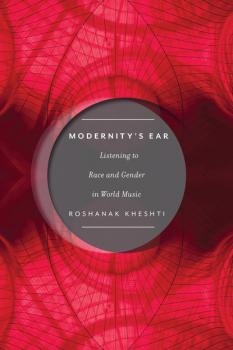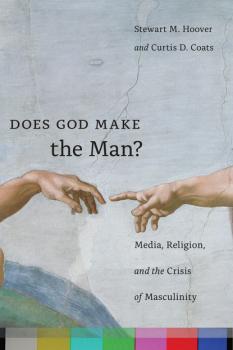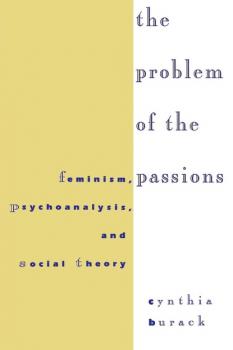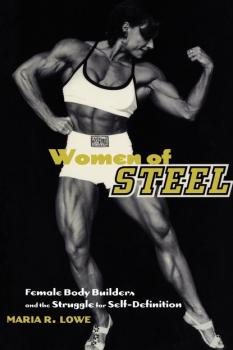ТОП просматриваемых книг сайта:
Управление, подбор персонала
Различные книги в жанре Управление, подбор персонала, доступные для чтения и скачиванияАннотация
There are people dedicated to improving the way we eat, and people dedicated to improving the way we give birth. A Bun in the Oven is the first comparison of these two social movements. The food movement has seemingly exploded, but little has changed in the diet of most Americans. And while there’s talk of improving the childbirth experience, most births happen in large hospitals, about a third result in C-sections, and the US does not fare well in infant or maternal outcomes. In A Bun in the Oven Barbara Katz Rothman traces the food and the birth movements through three major phases over the course of the 20th century in the United States: from the early 20th century era of scientific management; through to the consumerism of Post World War II with its ‘turn to the French’ in making things gracious; to the late 20th century counter-culture midwives and counter-cuisine cooks. The book explores the tension throughout all of these eras between the industrial demands of mass-management and profit-making, and the social movements—composed largely of women coming together from very different feminist sensibilities—which are working to expose the harmful consequences of industrialization, and make birth and food both meaningful and healthy. Katz Rothman, an internationally recognized sociologist named ‘midwife to the movement’ by the Midwives Alliance of North America, turns her attention to the lessons to be learned from the food movement, and the parallel forces shaping both of these consumer-based social movements. In both movements, issues of the natural, the authentic, and the importance of ‘meaningful’ and ‘personal’ experiences get balanced against discussions of what is sensible, convenient and safe. And both movements operate in a context of commercial and corporate interests, which places profit and efficiency above individual experiences and outcomes. A Bun in the Oven brings new insight into the relationship between our most intimate, personal experiences, the industries that control them, and the social movements that resist the industrialization of life and seek to birth change.
Аннотация
Choice Outstanding Academic Title of 2016 Rural queer experience is often hidden or ignored, and presumed to be alienating, lacking, and incomplete without connections to a gay culture that exists in an urban elsewhere. Queering the Countryside offers the first comprehensive look at queer desires found in rural America from a genuinely multi-disciplinary perspective. This collection of original essays confronts the assumption that queer desires depend upon urban life for meaning. By considering rural queer life, the contributors challenge readers to explore queer experiences in ways that give greater context and texture to modern practices of identity formation. The book’s focus on understudied rural spaces throws into relief the overemphasis of urban locations and structures in the current political and theoretical work on queer sexualities and genders. Queering the Countryside highlights the need to rethink notions of “the closet” and “coming out” and the characterizations of non-urban sexualities and genders as “isolated” and in need of “outreach.” Contributors focus on a range of topics—some obvious, some delightfully unexpected—from the legacy of Matthew Shepard, to how heterosexuality is reproduced at the 4-H Club, to a look at sexual encounters at a truck stop, to a queer reading of TheWizard of Oz. A journey into an unexplored slice of life in rural America, Queering the Countryside offers a unique perspective on queer experience in the modern United States and Canada.
Информация о книге
Автор произведения Группа авторов
Жанр Управление, подбор персонала
Серия Intersections
Аннотация
A man and woman are in an open relationship. They have agreed that having sexual partners outside of their relationship is permissible. One night, when her partner is in another city, the woman has sex with the man’s best friend. What does this mean for their relationship? More importantly, why is there such a strong cultural taboo against this kind of triangulation and what does it reveal about the social organization of gender and sexuality? In Beyond Monogamy, Mimi Schippers asks these and other questions to explore compulsory monogamy as a central feature of sexual normalcy. Schippers argues that compulsory monogamy promotes the monogamous couple as the only legitimate, natural, or desirable relationship form in ways that support and legitimize gender, race, and sexual inequalities. Through an investigation of sexual interactions and relationship forms that include more than two people, from polyamory, to threesomes, to the complexity of the ‘down-low,’ Schippers explores the queer, feminist, and anti-racist potential of non-dyadic sex and relationships. A serious look at the intersections of society and sexuality, Beyond Monogamy takes the reader on a compelling and accessible journey through compulsory monogamy, polyamory, and polyqueer sex and relationships.
Информация о книге
Автор произведения Mimi Schippers
Жанр Управление, подбор персонала
Серия Intersections
Аннотация
Inside the global music industry and the racialized and gendered assumptions we make about what we hear Fearing the rapid disappearance of indigenous cultures, twentieth-century American ethnographers turned to the phonograph to salvage native languages and musical practices. Prominent among these early “songcatchers” were white women of comfortable class standing, similar to the female consumers targeted by the music industry as the gramophone became increasingly present in bourgeois homes. Through these simultaneous movements, listening became constructed as a feminized practice, one that craved exotic sounds and mythologized the ‘other’ that made them. In Modernity’s Ear, Roshanak Kheshti examines the ways in which racialized and gendered sounds became fetishized and, in turn, capitalized on by an emergent American world music industry through the promotion of an economy of desire. Taking a mixed-methods approach that draws on anthropology and sound studies, Kheshti locates sound as both representative and constitutive of culture and power. Through analyses of film, photography, recordings, and radio, as well as ethnographic fieldwork at a San Francisco-based world music company, Kheshti politicizes the feminine in the contemporary world music industry. Deploying critical theory to read the fantasy of the feminized listener and feminized organ of the ear, Modernity’s Ear ultimately explores the importance of pleasure in constituting the listening self.
Информация о книге
Автор произведения Roshanak Kheshti
Жанр Управление, подбор персонала
Серия Postmillennial Pop
Аннотация
Many believe that religion plays a positive role in men’s identity development, with religion promoting good behavior, and morality. In contrast, we often assume that the media is a negative influence for men, teaching them to be rough and violent, and to ignore their emotions. In Does God Make the Man?, Stewart M. Hoover and Curtis D. Coats draw on extensive interviews and participant observation with both Evangelical and non-Evangelical men, including Catholics as well as Protestants, to argue that neither of these assumptions is correct. Dismissing the easy notion that media encourages toxic masculinity and religion is always a positive influence, Hoover and Coats argue that not only are the linkages between religion, media, and masculinity not as strong and substantive as has been assumed, but the ways in which these relations actually play out may contradict received views. Over the course of this fascinating book they examine crises, contradictions, and contestations: crises about the meaning of masculinity and about the lack of direction men experience from their faith communities; contradictions between men’s religious lives and media lives, and contestations among men’s ideas about what it means to be a man. The book counters common discussions about a “crisis of masculinity,” showing that actual men do not see the world the way the “crisis talk” has portrayed it—and interestingly, even Evangelical men often do not see religion as part of the solution.
Аннотация
The decision to have a child is seldom a simple one, often fraught with complexities regarding emotional readiness, finances, marital status, and compatibility with life and career goals. Rarely, though, do individuals consider the role of the law in facilitating or inhibiting their ability to have a child or to parent. For LGBT individuals, however, parenting is saturated with legality – including the initial decision of whether to have a child, how to have a child, whether one’s relationship with their child will be recognized, and everyday acts of parenting like completing forms or picking up children from school. Through in-depth interviews with 137 LGBT parents, Amanda K. Baumle and D’Lane R. Compton examine the role of the law in the lives of LGBT parents and how individuals use the law when making decisions about family formation or parenting. Baumle and Compton explore the ways in which LGBT parents participate in the process of constructing legality through accepting, modifying, or rejecting legal meanings about their families. Few groups encounter as much variation in access to everyday legal rights pertaining to the family as do LGBT parents. This complexity and variation in legal environments provides a rather unique opportunity to examine the manner in which legal context affects the ways in which individuals come to understand the meaning and utility of the law for their lives. The authors conclude that legality is constructed through a complex interplay of legal context, social networks, individual characteristics, and familial desires. Ultimately, the stories of LGBT parents in this book reflect a rich and varied relationship between the law, the state, and the private family goals of individuals.
Аннотация
Scholars have widely acknowledged thepersistent ambivalence with which the Japanese religious traditions treatwomen. Much existing scholarship depicts Japan’s religious traditions as meremeans of oppression. But this view raises a question: How have ambivalent andeven misogynistic religious discourses on gender still come to inspire devotionand emulation among women?In Women in Japanese Religions, Barbara R. Ambrosexamines the roles that women have played in the religions of Japan. An importantcorrective to more common male-centered narratives of Japanese religioushistory, this text presents a synthetic long view of Japanese religions from adistinct angle that has typically been discounted in standard survey accountsof Japanese religions.Drawing on a diverse collection ofwritings by and about women, Ambros argues that ambivalent religious discoursesin Japan have not simply subordinated women but also given them religiousresources to pursue their own interests and agendas. Comprising nine chaptersorganized chronologically, the book begins with the archeological evidence offertility cults and the early shamanic ruler Himiko in prehistoric Japan andends with an examination of the influence of feminism and demographic changeson religious practices during the “lost decades” of the post-1990 era. Byviewing Japanese religious history through the eyes of women, Women in Japanese Religions presents anew narrative that offers strikingly different vistas of Japan’s pluralistictraditions than the received accounts that foreground male religious figuresand male-dominated institutions.Additional Resources
Информация о книге
Автор произведения Barbara R. Ambros
Жанр Управление, подбор персонала
Серия Women in Religions
Аннотация
Women, says conventional wisdom, are warm, nurturing caregivers with an intrinsically enhanced capacity for attachment and compassion. Feminists, says the popular image, are full of rage, devoid of the feelings that are natural to women. How have feminists themselves dealt with this dualism and, more specifically, with the disagreeable passions? What has too often been missing from discussions of women's psychology in social theory is an account of women as ambivalent: both empathic and enraged, loving and hating. The Problem of the Passions fills this void. Examining the work of such feminist theorists as Carol Gilligan, Nancy Chodorow, Jessica Benjamin, and Dorothy Dinnerstein in a new light, Burack argues that feminist social theory can be repaired through attention to the pioneering psychoanalytic work of Melanie Klein. Sure to be of interest to feminists, psychoanalysts, political scientists, and social theorists, The Problem of the Passions is essential reading for anyone concerned with feminism and questions of identity in social thought.
Аннотация
"A courageous analysis of Arab writers, addressing the connections between masculinity, violence, and nationalism." —Robin Morgan, Ms. ."Rarely have sexuality and war been treated with such poignancy and historical concreteness .... The force of these often intertwined phenomena endemic to the human condition are considered with incisive and wrenching specificity from within one of the most baneful convergences of sexuality and war in recent history." —Djelal Kadir, editor, World Literature Today ."Personal, powerful, passionate, uncensored."—Fedwa Malti-Douglas, The Journal of Women's History .A welcome departure from stereotypical nationalist conceptions from which no solutions to the current impasse can possibly emerge."—Joel Benin, The Middle East Report .Accad's extraordinary pacifism is deeply compelling to women as it is deeply challenging to men." —Andrea Dworkin.A splendid book. Drawing on interviews with Lebanon's village women and her close readings of Lebanon's contemporary novelists, Accad manages to pull back the veil that has shrouded so many conventional nationalisms, revealing their roots in men's effort to control women's sexuality."—Cynthia Enloe, author of Does Khaki Become You? "Extraordinary in weaving together literature, feminist theory, and theories of war and violence. Her analysis of the relationships between sexuality, war, and nationalism is stunning in its frankness and importance." —Berenice A. Carroll, Purdue University."It is in the women's writings on the Lebanese civil war that Accad discerns alternative visions that could shape a non- violent reality." —Miriam Cooke, The Middle East Studies .This book should remind us how patriarchies can operate similarly in societies we most often define through difference .... [Accad's] forthright, critically respectful, caring treatment of Lebanese lives and worlds resonates as we engage with the longterm repercussions of the Gulf War.—Marilyn Booth, Women's Review of Books .This compelling book offers an exploration of the indissoluble link between war and sexuality based on over twelve years of interviews by the well-known Lebanese expatriate teacher, critic, and writer.Evelyne Accad explores what she calls the indissoluble link between war and sexualtiy. She refers to sexuality as the physical and psychological relations of men and women, and examines Middle Eastern customs involved in defining such relationships. She argues that many of the problems faced by societies at war stem from the way male sexuality is viewed and imposed and from the oppression of women within cultural parameters. For twelve years Professor Accad interviewed women throughout the Middle East about their sexuality and relationships with men. On the basis of these interviews and a close study of six novels written by both men and women on the subject of the Lebanese war, she explores the connection between sexualtity and war and contrasts the reactions of male authors with those of their female counterparts. Each author views war as having roots in sexuality.Evelyne Accad concludes that "there is a need for a new rapport between men and women, women and women, and men and men: there is a ned for relationshops based on trust, recognition of the other, tenderness, equal sharing, and love devoid of jealousy and possession. Since the personal is the political, changes in relationshops traditionally based on domination, oppression, and power games will inevitably rebound in other spheres of life.
Информация о книге
Автор произведения Группа авторов
Жанр Управление, подбор персонала
Серия Feminist Crosscurrents
Аннотация
"A lot of people in the general public think female bodybuilding is gross and freaky . . . that that's not what a woman is supposed to look like." So says Michelle, a national bodybuilding judge. In fact, athletic women, especially those in sports where strength, muscle, and sweat feature prominently, are typically viewed by the public as being outside the boundaries of appropriate femininity. And perhaps no group of women athletes embodies this gender outlaw status more than female bodybuilders, who by their bulk and sheer strength challenge our very notions of what it means to be a woman. Why would women choose to look like that? And what does it take to get and stay so muscular? Maria R. Lowe has interviewed more than one hundred people connected with women's bodybuilding, from the bodybuilders themselves, to trainers, family members, spouses, judges, and sponsors. In Women of Steel , Lowe introduces us to a world where size and strength must be balanced with a nod toward grace and femininity. Lowe, who actually worked out with a couple of the bodybuilders she interviewed, gets at the heart of what it is to be a woman bodybuilder. We learn about «paying the price»–doing the necessary exercise, and sometimes drugs–that allows women to rise to the top of their profession. We follow their successes and failures, and discover the benefits– including increased self-esteem and physical strength–as well as the sometimes unhealthy effects of their training regimen, from dehydration to baldness to rampant acne to high blood pressure. We travel with the women from competition to competition and find that judges' standards seem to vary alarmingly depending on momentary notions of what constitutes «the overall package»–that elusive perfect body that catches judges' eyes and wins competitions. Above all, Women of Steel is a keenly observant diary of life in women's bodybuilding, a must-read for people interested in sports, competition, physical culture, and gender.










